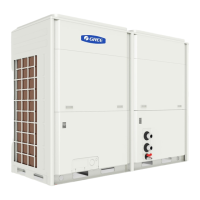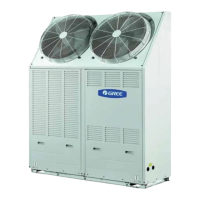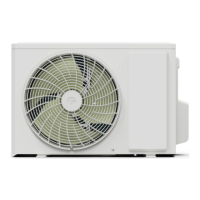37
Unit Installation
NOTE
Keep the purge valve of the water system open in order to drain the evaporator and condenser
completely.
3.4.2 Requirements on piping
The piping slope should meet design and construction regulations and the exible pipe is not allowed
to be longer than 150mm.
Pipes which go through the dilatation joint and the settlement joint should be protected with the exible
joint.
No matter which connection is used, welding, threaded connection or ange connection, the connection
joint can’t be in the wall, oor or sleeve pipe.
The riser pipe should be installed vertically. When the floor height is or less than 5m, a pipe clip
is required. When the floor height is or larger than 5m, at least 2 pipe clips should be required. The
installation height of the pipe clip is 1.8m. For the main riser pipe, it should be secured with the fixed
bolster to support the weight of the riser pipe.
See the table below for the installation standards of the pipes.
Item Allowable deviation Inspection method
Straightness
DN≤100mm 2L‰, max.440mm
By the ruler, tape measurement
DN>100mm 3L‰, max.460mm
Verticality 25L‰, max.425mm By the ruler, tape measurement
Interval of Parallel Pipes 15mm By the ruler, tape measurement
Parallelism of Parallel Pipes 3mm By the ruler, tape measurement
Piping owchart
Check documents
and drawings
Check materials
Prefabricate pipes
Install hangers
and brackets
Install pipes
Take the pressure
test
Rinse pipes
Take the anti-corrosion
and insulation treatment
T
ake protective
measures to the
finished products
(1) Check documents and drawings
1) Check the process flow, construction procedures and quality requirements in accordance with
drawings and technical data.
2) Check the installation location, installation height, arrangement, and installation space of pipes in
accordance with equipment drawings and building drawings.
(2) Check materials
1) Before installation, check for the mode of the valves, clean them and then take the strength and
air-proof tests.
2) Pipes should be cleaned with a steel brush or abrasive paper. After that, seal the pipe ends and
keep both the internal and external surface dry.
3) Pipes should be painted twice with anti-rust paint without any curtaining and voids.

